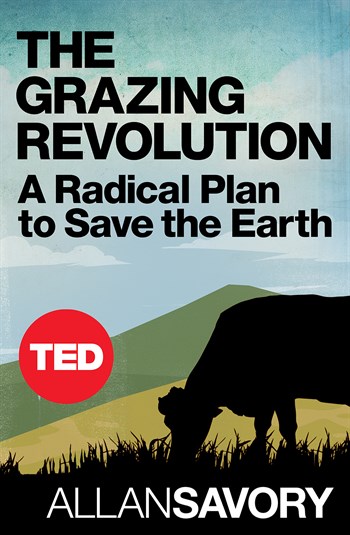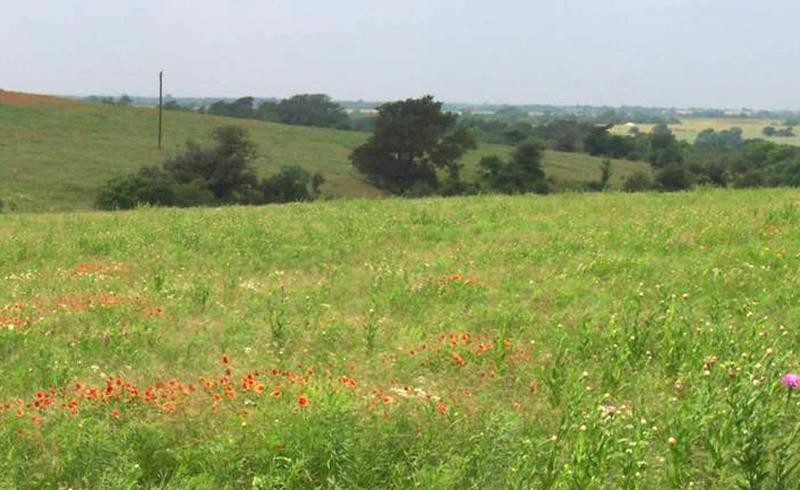Restoring Desert Grasslands: A New Book by Allan Savory
It is hard to believe that the common sense contained in this little book has generated such anger and controversy.
Holistic planned grazing uses domestic animals as replacements for the great wild herds that once roamed our grasslands.
Beginning with a simple explanation of the physiological need of grasslands for animal impact, Savory proceeds with an explanation of a cheap, easy way to apply this on the ranges. To this he adds a prescription for a long-term planning process that elevates social and environmental outcomes to the same level as profits.
This book should be read by every rancher, wildlifer and manager, especially those who believe they disagree with Savory. Most will find that they agree with these simple ideas, and be surprised to learn that the ideas they disagree with were never recommended by Savory.
 The Grazing Revolution: A Radical Plan to Save the Earth (TED Books Book 39)
The Grazing Revolution: A Radical Plan to Save the Earth (TED Books Book 39)
Our planet is rapidly turning to desert. Once-lush grasslands, the source of precious food and water, are growing dry and bare. Rivers that used to flow year-round now run dry after the rains. Grazing animals want for food.
What is causing this “desertification” of the earth, and how can we stop it?
In The Grazing Revolution, biologist Allan Savory presents a solution that’s as radical as it is simple: huge herds of livestock, managed to mimic the behavior of the natural herds that once roamed grasslands centuries ago.
Tracing his own story of discovery, Savory debunks common misconceptions and provides a vivid chronicle of the process by which he has seen scrubby wasteland revert to robust ecosystems. Our age-old agricultural practices are contributing greatly to the global climate change underway; Savory argues that by re-imagining these practices, we can reverse desertification and save the planet.
Reviews and Book Available at AMAZON




Cattle that grazed according to Savory’s method needed expensive supplemental feed, became stressed and fatigued, and lost enough weight to compromise the profitability of their meat. And even though Savory’s Grazing Trials took place during a period of freakishly high rainfall, with rates exceeding the average by 24 percent overall, the authors contend that Savory’s method “failed to produce the marked improvement in grass cover claimed from its application.” The authors of the overview concluded exactly what mainstream ecologists have been concluding for 40 years: “No grazing system has yet shown the capacity to overcome the long-term effects of overstocking and/or drought on vegetation productivity.”
http://www.thewildlifenews.com/2013/11/12/allan-savory-myth-and-reality/
http://www.slate.com/articles/life/food/2013/04/allan_savory_s_ted_talk_is_wrong_and_the_benefits_of_holistic_grazing_have.html
http://freethoughtblogs.com/pharyngula/2013/03/17/adam-merberg-on-grazing-and-allan-savory-and-ted/
Thanks for your time in making this comment.
My family ranches 32,000 acres in far-West Texas where we practice holistic management. Cattle grazing is a very important practice in maintaining a bio-diverse wildlife population. This is the empirical evidence and experience on which I have based all my comments regarding cattle.
Your link #1:
After George Wuerthner wrote an anti-Savory, anti-cattle article, I unsuccessfully tried to engage him in a discussion about these matters. I sent him this paper which shows why his understanding of holistic planned grazing as being a form of ‘short duration grazing’ (SDG) is mistaken. He never responded.
https://pitchstonewaters.com/tpwd-mule-deer-habitat-advice/
Here is the background on this paper: Some years ago the Texas Parks and Wildlife Department in conjunction with every major state and federal wildlife agency in the United States published a paper called “Habitat Guidelines for Mule Deer,” which said that what we do with cattle harms desert mule deer.
This paper, a small book really, referenced many studies as ‘science’ supporting its grazing conclusions: these in turn referenced many other studies. I read them all and discovered that none tested planned grazing. Then, I wrote a series of letters to the authors, which evaluated every one of those studies in terms of whether or not they had tested Alan Savory’s grazing precepts, which we have employed with such success. The authors of the book or papers could not have read the studies and reached a different conclusion. They provided an example of sloppy scholarship, filling up their reference sections with unread citations.
Your recent link shows Mr. Wuerthner still relies on this 50-year-old bad science: He remains confused about the difference between SDG, which is an unplanned formula for moving cattle around, and planned grazing. He says planned grazing is Savory’s version of SDG but Savory has never advocated any grazing method that is divorced from planning. Also I am pretty sure Mr. Wuerthner has never managed cattle or wildlife.
With respect to your second link, regarding the Charter Trials, which is also the excerpt you have quoted, I will refer you to Savory’s book which deals with this:
http://www.amazon.com/The-Grazing-Revolution-Radical-Earth-ebook/dp/B00H7JW4OW
With respect to your third link, I cannot follow this line of discussion however in looking at Mr. Merberg’s sources I note the main one is David Briske, a respected Texas A&M range “expert”. Dr. Briske also misattributes unplanned SDG systems to Savory as can be seen in his paper:
https://pitchstonewaters.com/briske-et-al-synthesis-paper/
I wrote him the letter appearing below pointing out its fatal flaw of misattribution, which he neither acknowledged nor answered:
https://pitchstonewaters.com/chris-gill-to-dr-david-briske/
In summary response to all of this (you, Mr. Wuerthner, Mr. Merberg, Dr. Briske), let me just say that planned grazing is a not a “system” or grazing formula but a decision-making process. Surely you would all agree that plants need animals as much as animals need plants: We must plan how to bring animals into the system in away that is beneficial since we know that much damage has been done by bad grazing. That is all there is to it.
I would appreciate it if you would identify yourself by name, locale and experience in your area. Read the little book: it costs $4 and can be finished in an hour. Then we can see whether our experience leads us to agree or disagree about how animals impact habitat and vice-versa, and how best to reinvigorate the plant community where “the rubber hits the road”.
Thanks again.
Chris,
I would like to respond to the people that disagree with the holistic approach. If it doesn’t work, then why has your family had such great success? If it doesn’t work, then why has David Bamberger had such great success in the Hill Country? I compare the anti-Savory people to the same people that say that organic gardening doesn’t work. At the end of the day, it is easier to work with nature instead of relying on chemicals and unnecessary killing of animals to try to manipulate nature. Keep up the great work!